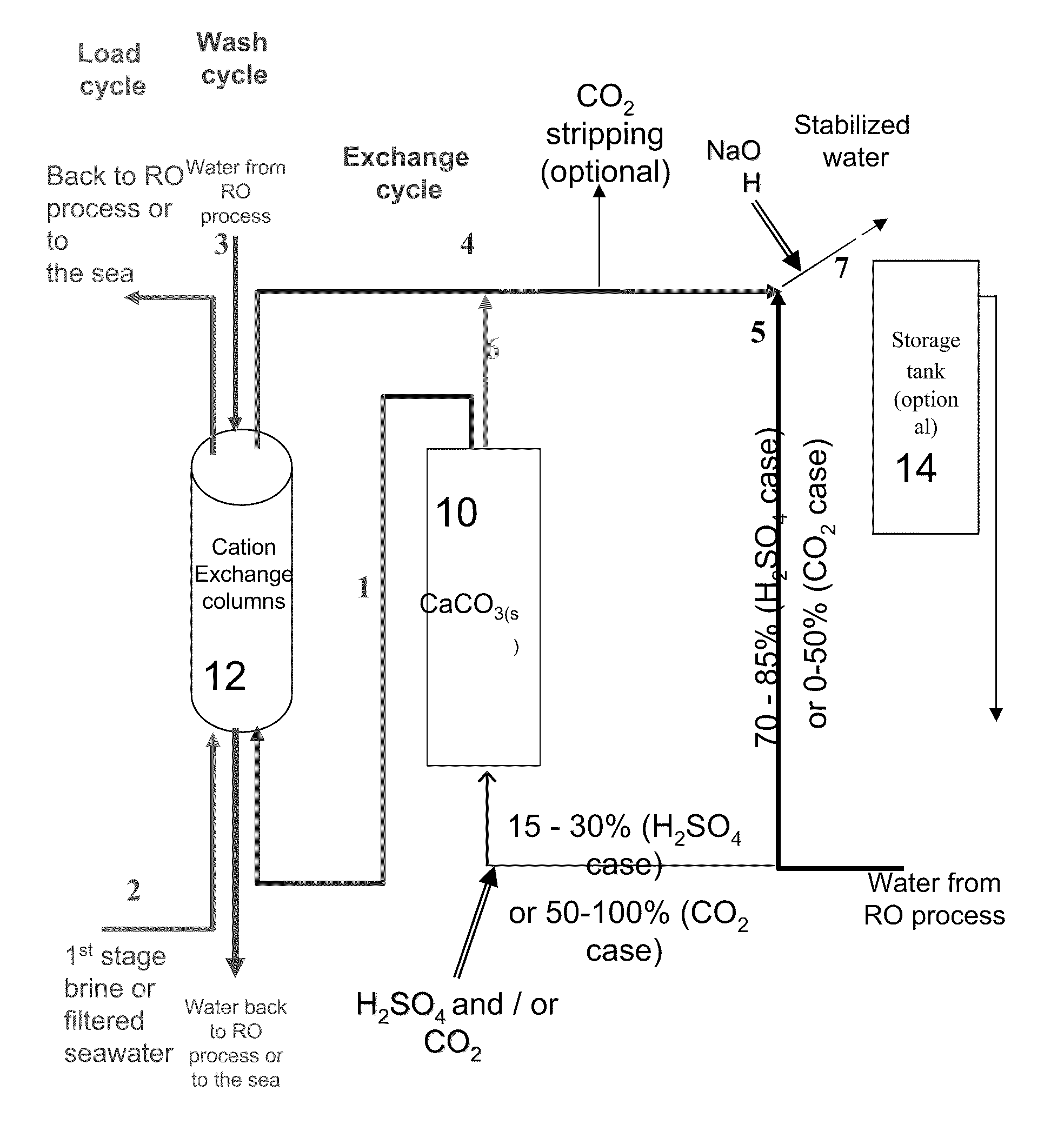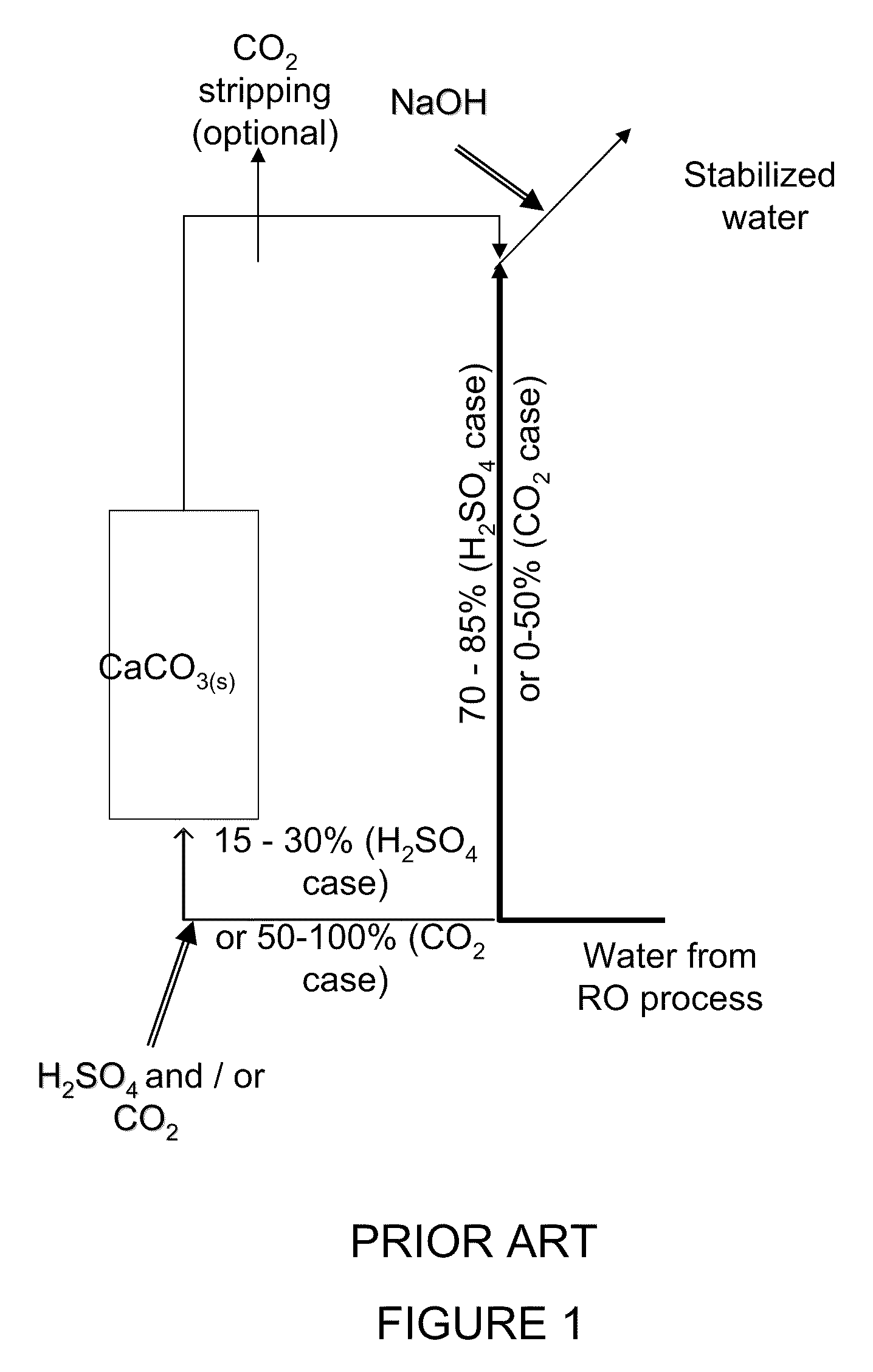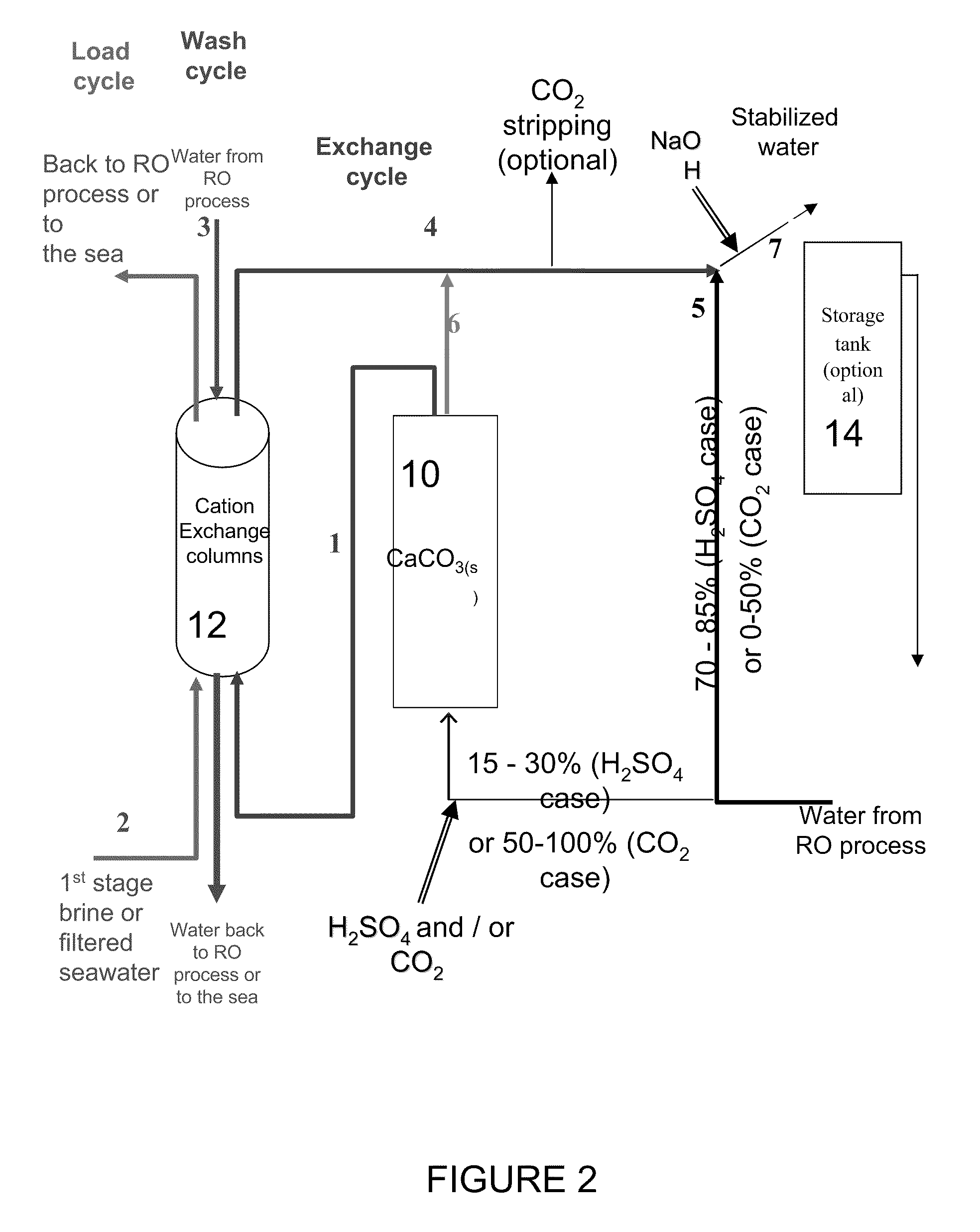Post treatment of desalinated and soft water for balanced water composition supply
a technology of soft water and desalinated water, which is applied in the direction of water/sludge/sewage treatment, specific water treatment objectives, solid sorbent liquid separation, etc., can solve the problems of shortened infrastructure life time, corrosion of water distribution pipes, and limited total hardness of water, etc., to achieve high affinity, low affinity, and high hardness
- Summary
- Abstract
- Description
- Claims
- Application Information
AI Technical Summary
Benefits of technology
Problems solved by technology
Method used
Image
Examples
example 1
Continuous-Mode Operation
Required Water Quality at Outlet of Post Treatment Process
[0068]Alkalinity>90 mg / L as CaCO3 [0069]120≧[Ca2+]≧80 mg / L as CaCO3 [0070][Mg2+]=24.3 mg / L as Mg2+[0071]CCPP≧3.0 mg / L as CaCO3 [0072]pH=
General Design
[0073]The required chemicals addition to the water when it passes through the calcite reactor is (assuming that only 25% of the water passes through the calcite reactor the chemical dosage per m3 of product water is 25% of these values):[0074]H2SO4(100%)=500 mg / L (to pH 2.05)[0075]CaCO3(s)=760 mg / L
[0076]According to the existing calcite dissolution process, this stream should have been recombined with 75% of untreated water and NaOH added to attain a pH value of around 7.78 to yield the following results: Alkalinity=92.5 mg / L as CaCO3, [Ca2+]=190 mg / L as CaCO3, and CCPP=3.1 mg / L as CaCO3 (the NaOH dosage required in this scenario is 24 mg / L of product water).
[0077]In the suggested process, the water that leaves the calcite column has the following water ...
example 2
Multiple Column Operation
[0079]Required Water Quality at Outlet of Post Treatment Process[0080]Alkalinity≧80 mg / L as CaCO3 [0081]120>[Ca2+]≧80 mg / L as CaCO3 [0082][Mg2+]=12.15 mg / L[0083]CCPP≧3.0 mg / L as CaCO3 [0084]pH
[0085]The following example describes a case in which the process is implemented as an add-on to an existing plant that originally uses CO2 as the sole acidifying agent. In order to supply water with the required TH (i.e. minimum 130 mg / l as CaCO3) and alkalinity concentration that only slightly surpasses the lower threshold, H2SO4 is also added to the influent of the calcite reactor. Addition of H2SO4 is equivalent to a reduction of the alkalinity.
General Design
[0086]The required chemical addition to the water when it passes through the calcite reactor is (assuming that 65% of the water passes through the calcite reactor):[0087]H2SO4 (100%)=44.1 mg / L (to pH 3.07 and CCPP=−90 mg / l as CaCO3 at the inlet of the calcite reactor).[0088]CO2 (100%)=80 mg / L (to CCPP=−227 mg / l ...
PUM
| Property | Measurement | Unit |
|---|---|---|
| concentration | aaaaa | aaaaa |
| concentration | aaaaa | aaaaa |
| pH | aaaaa | aaaaa |
Abstract
Description
Claims
Application Information
 Login to View More
Login to View More - R&D
- Intellectual Property
- Life Sciences
- Materials
- Tech Scout
- Unparalleled Data Quality
- Higher Quality Content
- 60% Fewer Hallucinations
Browse by: Latest US Patents, China's latest patents, Technical Efficacy Thesaurus, Application Domain, Technology Topic, Popular Technical Reports.
© 2025 PatSnap. All rights reserved.Legal|Privacy policy|Modern Slavery Act Transparency Statement|Sitemap|About US| Contact US: help@patsnap.com



